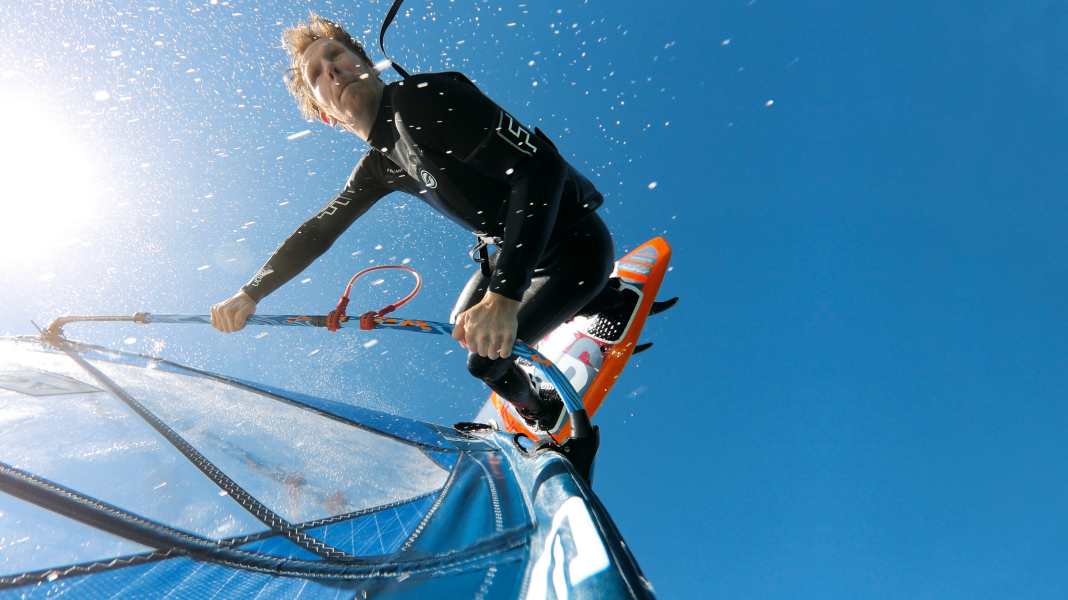
What length of boom?
Each sail has an imprint indicating the size of boom required, usually labelled "boom". As sails are trimmed taut or bulbous depending on the wind, the variance in boom length is often indicated by printed numbers +/- 2cm. When buying a boom, always choose a length with a little reserve for your largest sail, as the measurements are sometimes not exactly correct. If "Boom 185 cm" is printed on your sail, the boom should be extendable to at least 190 cm. Ideally, the boom should cover 3-4 sail sizes so that you only need one boom even if you have several sails. The adjustment range of the boom is printed on the spars.
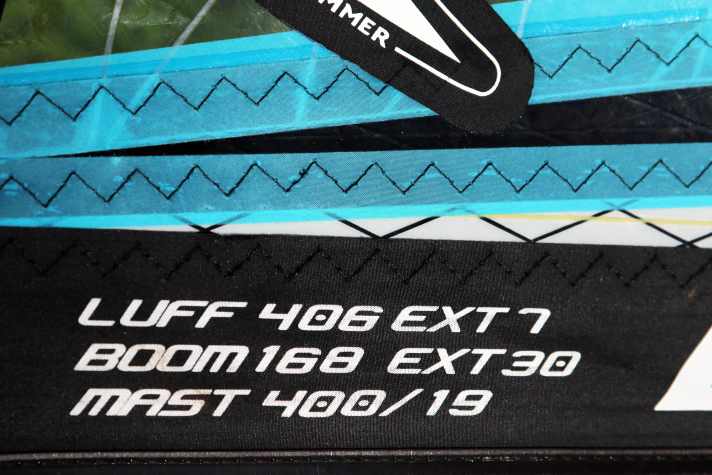
surf tip: If the boom has a little more reserve in the length of your largest sail than necessary, then it is more stable than a boom with the same length in the last hole because the end piece is retracted further. If the boom is fully extended, there is a risk that it will bend if a lot of force is applied, e.g. due to a fall.
Rdm or Sdm?
There are currently two different types of mast on the market, which only differ in diameter. A skinny mast (also known as RDM) has a smaller diameter than the standard mast (SDM). A boom is usually suitable for both mast types. Often a removable adapter is already integrated in the boom, or more precisely in the front piece and its cut-out for the mast, which compensates for the different diameters. If you buy a boom that does not have such an adapter, you have the option of buying a universal adapter. This is often supplied with the purchase of a skinny mast.
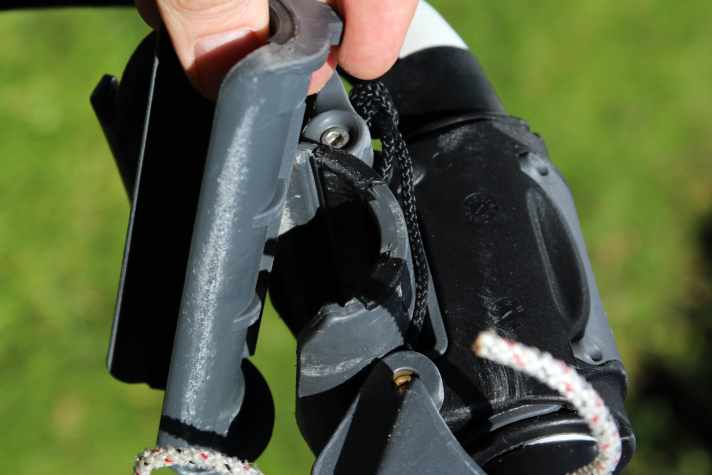
Boom - aluminium or carbon?
The answer is quickly given: carbon fibre! The fork is lighter, more stable and often has an even smaller spar diameter, which makes it easier to grip the fork. But, and this is the catch: a carbon fork is expensive, new forks cost between 500 and 800 euros, used forks still cost between 250 and 500 euros. But even "aluminium forks" don't spoil the fun of surfing and don't have to be a restriction for beginners or cracks. However, if you want to use the full adjustment range of your fork, jump a lot or are travelling with powerful camber sails, you should opt for a carbon fork if possible.
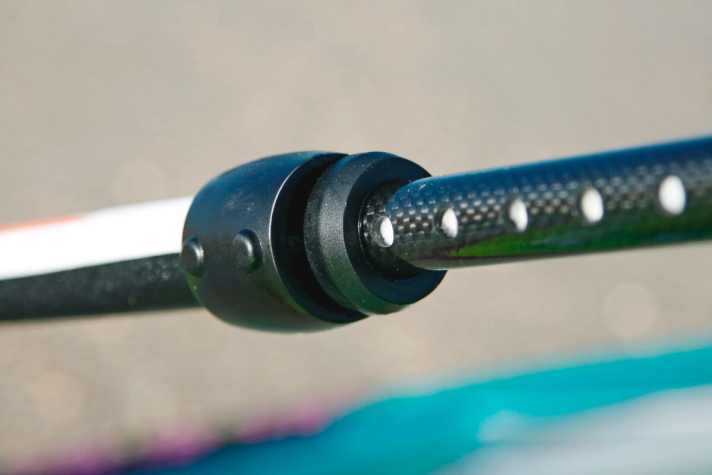
Condition
Bent? If you buy a used aluminium fork, make sure that it is not bent. You can tell whether a fork is bent by whether the end piece can be pushed into the fork as far as it will go. If not, then it is bent and you will not be able to use the full adjustment range.
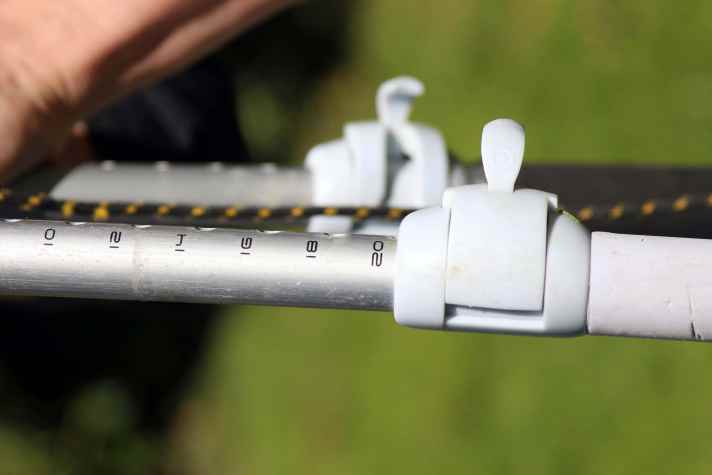
Corroded? If the end piece is covered with a kind of white layer of dust, the aluminium has corroded. A little corrosion is not a bad thing and cannot be avoided during storage. However, the more a fork corrodes, the more sluggish it becomes. In extreme cases, the end piece can no longer be moved - so check the end piece for ease of movement before you buy it.
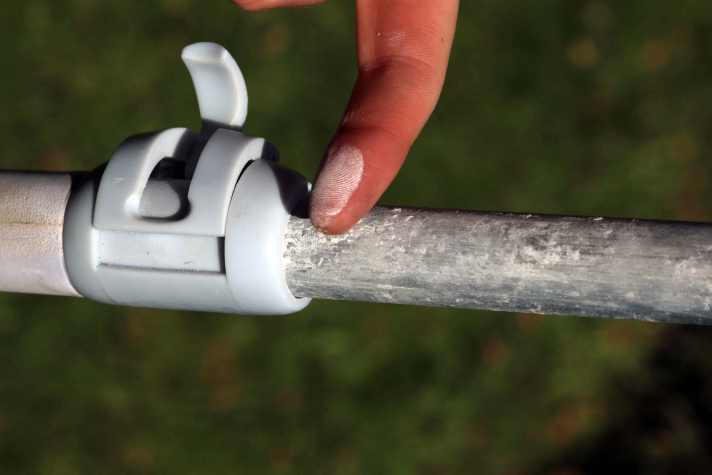
Broken coating? All rubbers suffer from contact with surfboards or tarmac, so small imperfections are normal and no reason not to buy the fork. However, if the pad is hanging in tatters or has been patched up with tape, this is an exclusion criterion. You can replace pads, but it's a lot of work and very expensive. You can see how it's done here here.

How much can forks cost?
Of course, the price always depends on the condition, age and material of the fork. Here is a rough guide:
- Aluminium forks: New 150-300 euros, used 60-150 euros
- Carbon forks: New 500 to 900 euros, used 280-500 euros
Marketplaces
The following links offer a wide range of used equipment. You can use the tips from our guide to find your way around here. Of course, you can also find suitable offers on Ebay & Co.
Surfsport.de: If desired, placed classified ads can also appear free of charge in the market sections of the print and digital editions of surf Magazin:

